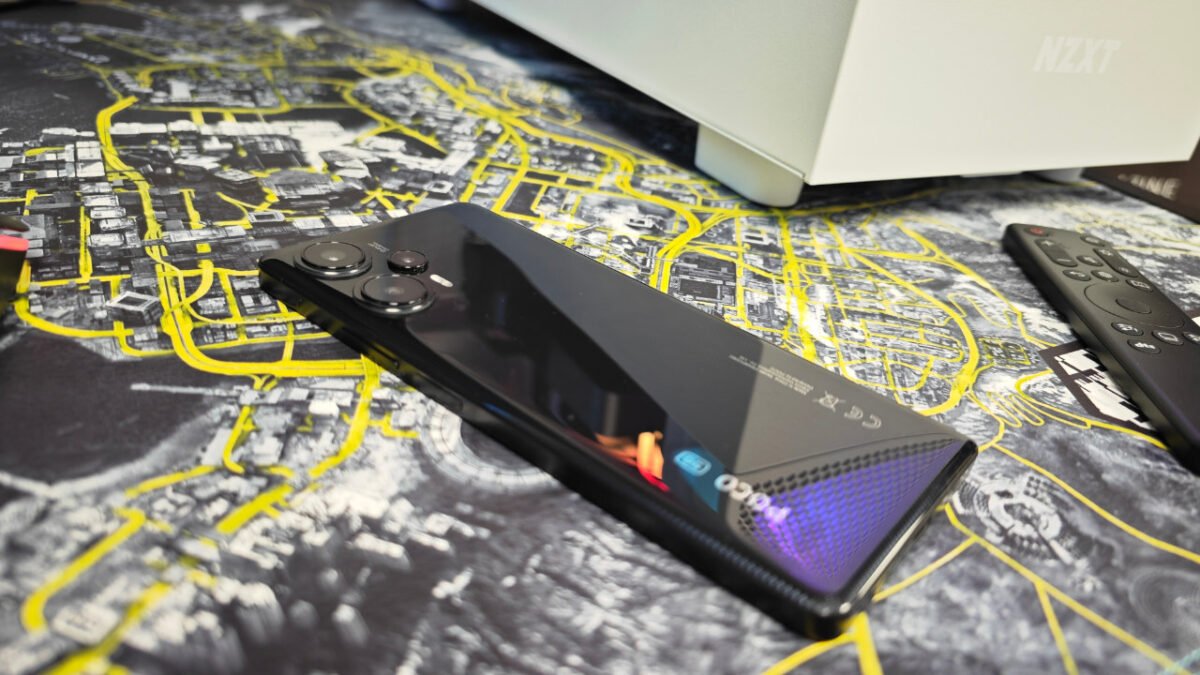The Poco F5 genuinely surprised me. As someone who has lived their entire life in Canada, there are certain assumptions you grow up with. Driving on the right side of the road or ordering a large double, double, for example, is what most Canadians would consider normal(unless your me, black coffee for life). In the world of phones, there are two options, Apple or Android. Within the category of Android, there are only a few go-to options to choose from, Namely Samsung and Google. Sure, there are occasional outliers, such as LG or Sony, but most people stick to what they know.
However, when you take a moment to examine the broader landscape, you quickly realize that there is much more to explore. The Poco F5, the latest Poco line from Chinese manufacturer Xiaomi, is one such phone. Packed to the brim with the latest features and hardware, the Poco F5 is ready to throw down with the latest that both Samsung and Google have to offer.
The Poco F5 sports a minimalist design. The front real estate capitalizes on leveraging every square millimetre for the beautiful 6.67” display. Thankfully there is no top-notch to house the camera. Instead, the font cam is nestled into the display allowing for a beautiful, clean aesthetic. On the right side of the F5, you’ll find volume up/down and power buttons, the latter of which doubles as your biometrics scanner.
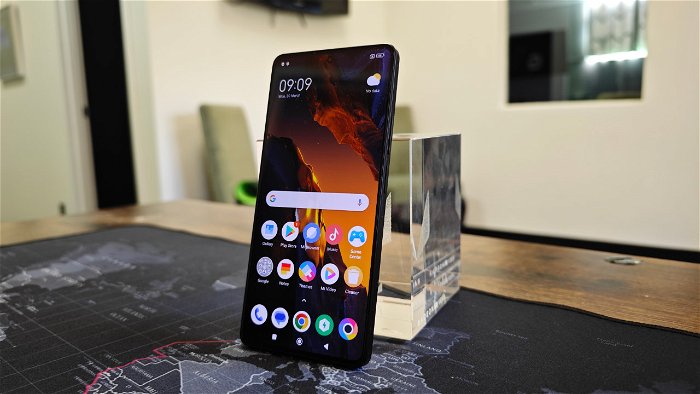
The top and bottom house one of the two speakers, with the latter also housing the USB-C type charging port and the former housing a 3.5mm headphone jack. Yes, you did hear that right. The Poco F5 sports an honest-to-goodness headphone jack. While it took a minute to find pair of earbuds that weren’t wireless, it was nice to plug them in and not have to hassle with connection or think about battery life for a change.
Interestingly the Poco F5 also supports another blast from the past in the form of an IR Blaster. For those too young to remember the glory days of infrared data transfer, this essentially means that the F5 can push commands to other devices with IR, such as a TV or stereo or even another phone. While the technology isn’t used as much today in a consumer setting, it’s a nice feature to add.
The back of Poco houses the tri-camera package, one of which is a whopping 64MP sensor with an f-stop of 1.8. More on this later. Thankfully the F5 bucks the trend of huge camera bumps and instead has worked hard to reduce that bump as much as possible, creating a sleek, almost unnoticeable camera bump.
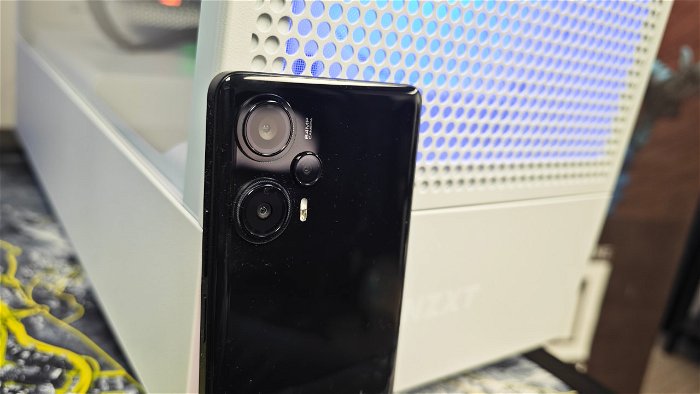
The Poco F5 comes in three flavours, white, black and blue, all of which have subtle patterns unique to their respective colour. For instance, the black version for this review sports small dark gray diagonal lines along the back that add just a bit of flair to the otherwise all-black phone.
“The Poco F5 is an impressive phone, even more so because it can produce flagship-level quality at a budget-friendly price point.”
The Poco F5 is impressively light, weighing in at 181g. It is also quite thin measuring at 7.9mm (minus the camera bump). This makes the F5 feel noticeably lighter and more compact by today’s standards while still measuring in at comparable sizes for height and width. It’s a smart, simple design that makes it stand out in the crowd.
Sporting a Snapdragon 7+ Gen 2 processor, this Octa-core CPU (yes, you read that right, 8 Cores) packs a serious punch. While the F5 comes with two different configurations, an 8GB RAM + 256GB storage and a 12GB Ram + 256GB storage option, the latter was used for testing and benchmarking. Interestingly, to help keep everything running cool, the F5 also comes with LiquidCool Technology 2.0, which is designed to help dissipate heat from the phone quicker. This, in turn, allows for longer sessions of binge-watching Netflix or mobile gaming.
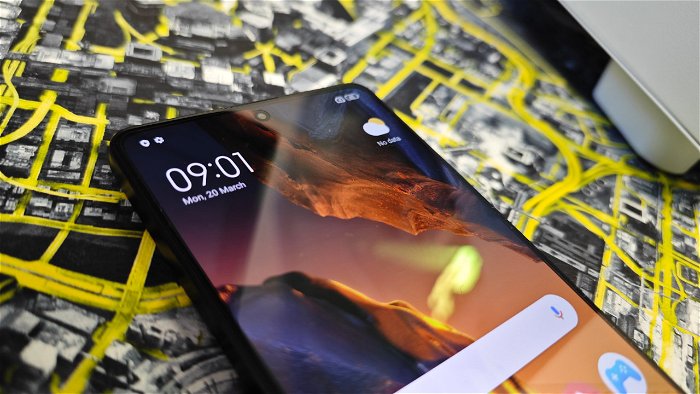
Pushing the CPU through its paces, it benchmarked exceptionally well. Geekbench results placed the F5’s Snapdragon Single-Core Score at 1599 while the Muti-Core score came in at 4078. These are some fairly impressive numbers for this chipset and a testament to Poco’s goal of creating a phone built for speed and quick response times.
In regards to real-world tests, the F5 has no problem handling any tasks thrown at it. Even the latest mobile titles like Diablo Immortal or Genshin Impact are handled easily with no noticeable lag or input delay. Performing everyday productivity tasks are handled effortlessly as well, allowing the F5 to keep up with the competition. Having 12GB of RAM helps keep functions such as split screen mode running smoothly. An example of this is streaming a 4K video on Youtube while writing emails simultaneously. The F5 easily managed both tasks without breaking a sweat.
As for the liquid cooling, while the stress tests did see the F5 get up to 39℃, the overall operating temperature for daily tasks was significantly lower. Performing daily tasks such as browsing social media, email, text, calls, etc., the F5 averaged about 32℃.

Gaming, specifically Diablo Immortal, Mighty Doom and Wild Rift, saw the F5 get up closer to 36℃ at peak but averaged closer to 34℃. While this is a bit subjective, as there are other factors that can contribute to these numbers, what is impressive is that even during long sessions, the Poco F5 never felt too warm or felt like it needed a minute to cool down. Overall it was consistently cool to the touch.
Speaking of 4K video, the Poco F5 also comes equipped with a beautiful 120Hz FHD+ Flow AMOLED DotDisplay. For those new to AMOLED DotDisplay tech, it essentially means that the display is comprised of quantum (very tiny) dots or pixels that can produce nearly any colour in the visible spectrum. Throw in adaptive HDR, resulting in a much more vibrant, visually stunning experience.
Pushing resolutions up to 2400 x 1080, this 6.67” screen is gorgeous to look at. 4K video is a delight to display on the screen, and with a 500-nit brightness, viewing the screen outside in broad daylight is no problem. Mobile gaming, likewise, looks beautiful on the F5, with the aforementioned Snapdragon, 12 GB of RAM and an impressive display all working together to create a powerhouse of a gaming device.
The battery life on the Poco F5 is another impressive area. Packed with a 5000mAh battery (for comparison, the Pixel 7 comes with a 4355mAh battery), you’ll have no problem getting through the day. Even performing traditionally battery-draining tasks like Youtube, TikTok, or gaming, it had no problem going the distance. The F5 does support 76W wired turbocharging (Thankfully, a 67W charger is included) for those that need power fast. While wireless charging isn’t an option, the F5’s long battery life and quick charging easily make up for the lack of wireless charging.
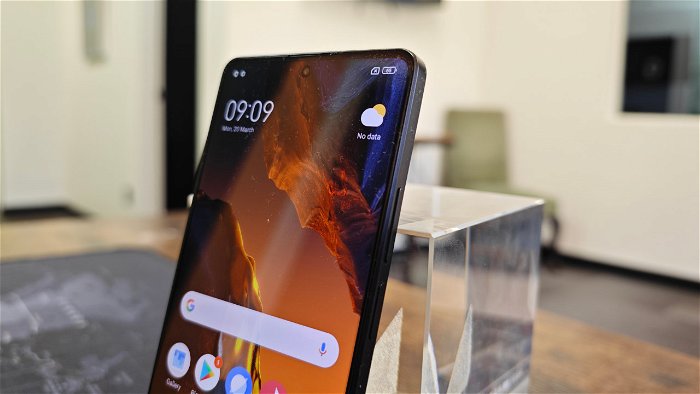
The Poco F5 supports a Dual SIM setup as well as the latest in 5G technology. In the two weeks of testing, the phone had no issues seamlessly switching from 5G to 4GLTE midcall when outside of 5G areas. Wifi, likewise, is impressively fast, supporting 802.11a all the way to 802.11ax. This resulted in some impressive speed tests. For daily use, there were no issues with connectivity. Those who rely on Bluetooth will be happy to hear that the F5 comes equipped with Bluetooth 5.3 and has no issue supporting multiple devices simultaneously.
As previously mentioned, the Poco F5 comes with three rear-facing cameras and one front-facing camera. The main driver is a 64MP Lens that can manage an aperture of f/1.79 with an impressive 4-in-1 pixel binning. Pixel binning is the process of combining adjacent pixels together to create a larger pixel. This helps compensate for low-light scenarios when combined with a higher-resolution sensor. In the case of the F5, the results are impressive. Combined with AI, the night shot mode produces some clean, low-light images. In the low-light samples below, the F5 had no problem producing solid-quality shots with relatively little noise.
“As previously mentioned, the Poco F5 comes with three rear-facing cameras and one front-facing camera.”
Interestingly the F5 also comes with a 64MP mode which seems to harness all the power of the lens to produce an incredibly crisp image. The option to manually adjust every setting for the shot allows for some fun and impressive shots. The 8MP ultra-wide has no problem handling anything thrown at it as well. The most impressive lens, though, is the 2MP macro lens. It produced some beautiful macro images and picked up every particle of dust that reflected light.



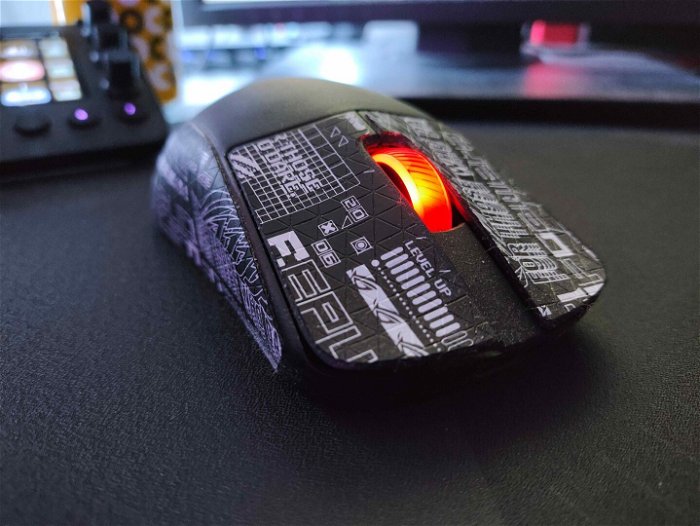
The front-facing 16MP lens is no slouch, either. With an aperture of f/2.45, it can effortlessly produce a beautifully lit shot. The F5 also has fairly impressive AI driving the cameras as well. Features like portrait, long exposure and Panorama are built-in, with the AI doing an impressive job at producing excellent-quality shots for each.
The F5 also supports up to 4K 30FPS video recording with steady hand recording options. Much like photos, the app allows you to control many of the settings aiding in the production of some quality video. The steady hand feature works fairly well overall, though it isn’t quite as nice as some of the other flagship phones on the market.



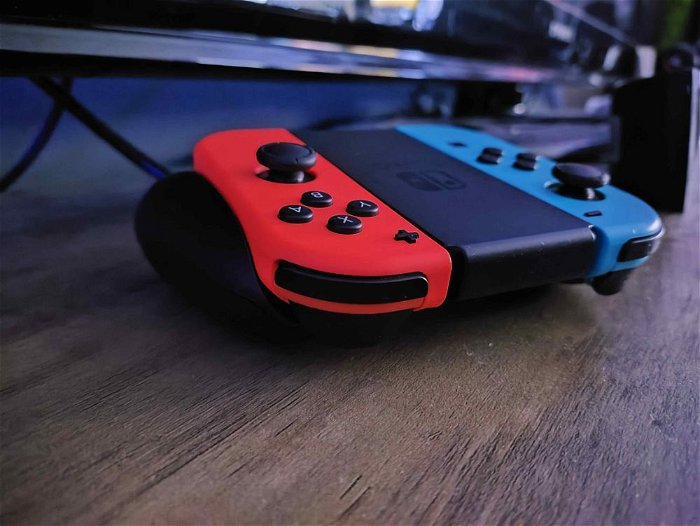


My only real notable critique is that despite the Poco F5 being exceptionally quick at every other task tested, the tap to autofocus can take up to a couple of seconds to adjust. This, of course, is impacted by lighting conditions, but overall, it felt a little slower than I’m used to. The F5 always focuses on the intended object, but it can take a second longer than I would like on those close-ups or macro shots. In everyday point-and-shoot situations, however, the F5 performed well.
The Poco F5 comes stock with Android 13 layered with Poco’s own MIUI 14 UI layered overtop. Historically, anything other than stock Android has always made me hesitant. It tends to slow down the overall user experience and is a bit clunky to use. I was pleasantly surprised to find how seamlessly the MIUI 14 UI worked with Android. For the most part, it offered some excellent quality-of-life features that I now wish were on my other stock Android phone.
A great example of this was the in-game overlay that allowed you to adjust settings on the phone to boost performance and easily create screen captures. Another came in the form of gesture controls for drop-down OS menus. While this is a stock feature on Android, the MIUI versions offered a host of new features and more straightforward navigation between notifications and phone controls.

Initially, one area that was a bit of a pain point was how MIUI 14 handles permissions. While it does an excellent job at letting you know every specific permission an application requests, it doesn’t always show you how to turn them on and off. It was initially a bit of a struggle to manage permissions for every app I installed until I got the hang of how MIUI handled it. It’s a bit more cumbersome than the stock experience but still very manageable if you don’t mind a little bit of a learning curve.
“The Poco F5 has knocked AI Face Unlock out of the park.”
The final two features to note are the AI Face Unlock and the biometric scanner. Full confession, I’m not much of an iOS fan. In fact, I have a soapbox talk dedicated to all the things I don’t like about how Apple handles its iOS. However, I have always been a bit envious of the AI Face Detection that comes on iPhone. It just works so well.
Historically this has been a pain point with most Android phones. However, the Poco F5 has knocked AI Face Unlock out of the park. After a quick setup, the F5 has no problem picking up and recognizing my face. More impressively, though, while I ran the setup without my glasses on, the F5 had no problem recognizing me with or without my glasses. It is also incredibly responsive, as in less than a second, and it recognizes fast.

The biometrics scanner, likewise, is impressively responsive. Thankfully Poco assigned the scanner to an actual button as opposed to behind-the-screen glass, meaning that you can create a tactile connection with the scanner. The result is a convenient, lightning-fast scan response that gets you into your phone quicker.
The Poco F5 is an impressive phone, even more so because it can produce flagship-level quality at a budget-friendly price point. Packed with impressive features and some serious hardware, it is only hampered by a few minor critiques that truly push it above the competition. Despite this, the Poco F5 can throw down with the latest from competitors and hold its own.
